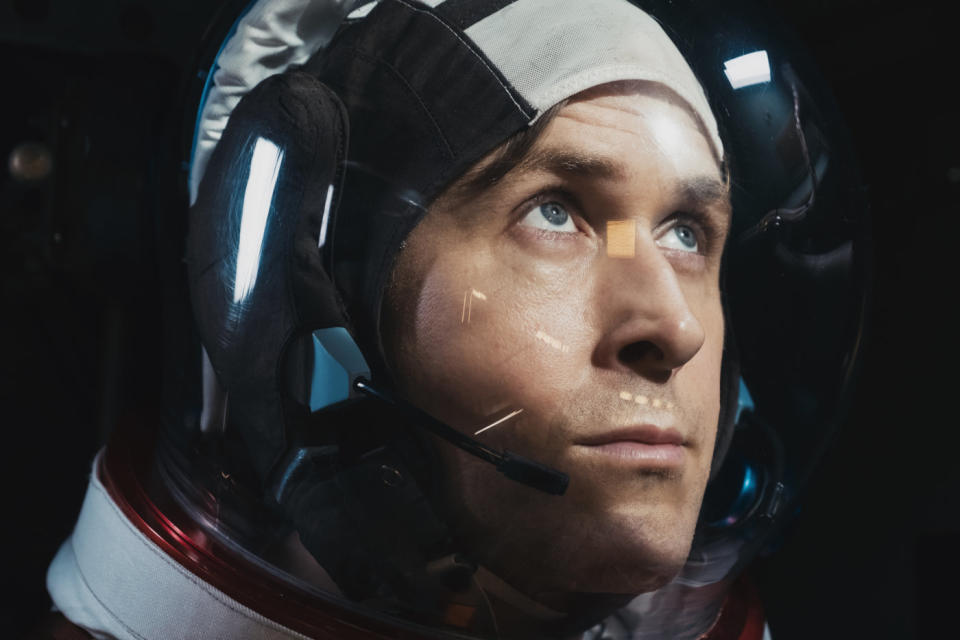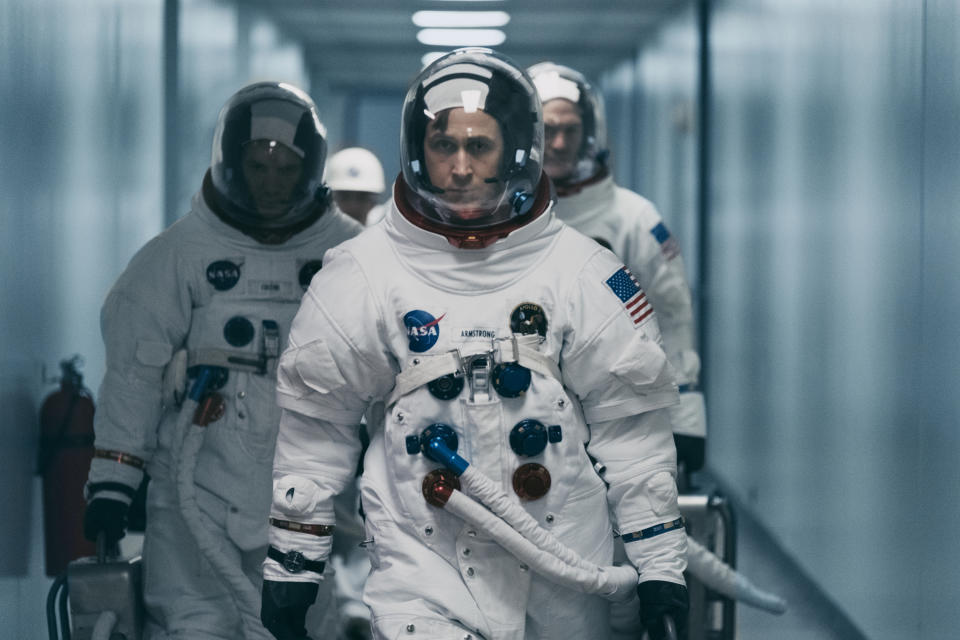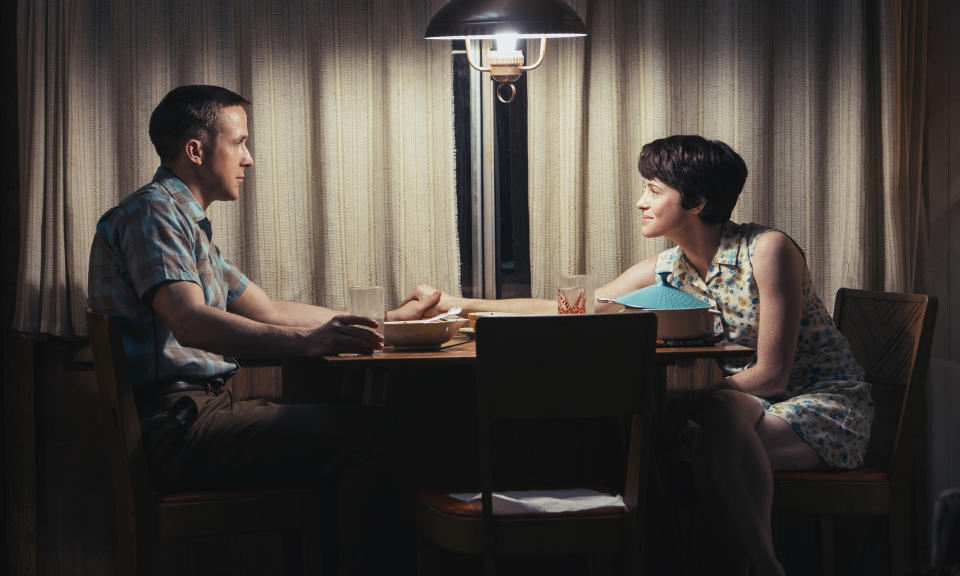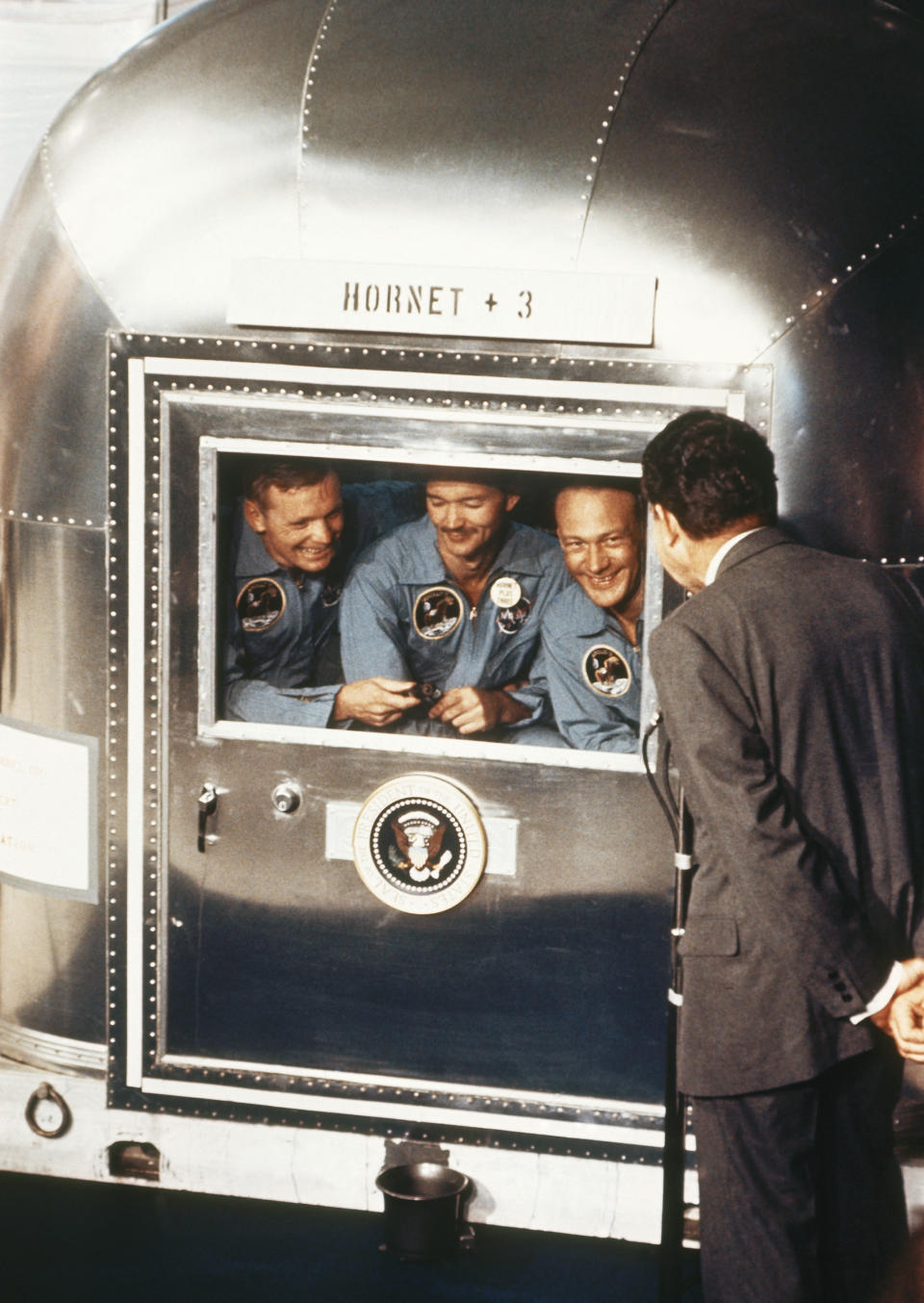How historically accurate is Neil Armstrong biopic 'First Man'?

By Chris Tilly
With First Man hitting home entertainment this week, we’ve been getting the lowdown on this remarkable moment in history from the author who wrote the source material. Finding out which bits of Damien Chazelle’s award-winning film are true, and which are made up.
First Man: The Life of Neil A. Armstrong – first published in 2005 – is the only authorised biography of the moonwalker, and writer James R. Hansen interviewed Armstrong, his family, and his friends, to paint a detailed picture of the enigmatic astronaut.
The book is used as the basis for First Man the movie, with Hansen serving as co-producer, lending his knowledge and expertise to director Damien Chazelle, screenwriter Josh Singer, and star Ryan Gosling.
But just how accurate is the movie to real-life? And which scenes required embellishment or dramatic license? Here Hansen breaks down First Man’s most memorable moments.
Beware of First Man spoilers incoming…
The flag controversy

Some of First Man’s finale takes place on the moon. But the film doesn’t depict Neil Armstrong and Buzz Aldrin planting the American flag on the surface. An artistic decision that caused consternation in the U.S., with some commentators – and even some politicians – calling the film unpatriotic. Most before they had seen it. The filmmakers asked people to watch the movie before passing judgment, but it’s clear that Hansen is still both frustrated and annoyed by the controversy.
Hansen: “What’s interesting in retrospect, given that there would be this controversy, is I didn’t think about the flag as an issue at all when I was reading the script, and I don’t think anybody else did either. There was never any discussion that I was part of or new about that dealt with the issue of the planting of the flag itself being shown. Because the film is really a dual journey. It’s a journey of the country to the moon. But it’s also Neil’s journey of grief that came from the death of his daughter. And the deaths of a lot of people close to the program.
“So when the dramatic arc of the movie gets to the moon’s surface, the filmmaker and screenwriter and what everybody was trying to figure out how best to do, was culminate those two journeys together. Especially the personal journey. What do we need to show on the surface of the moon for real closure on Neil’s personal journey? The flag was not anything that was thought of as central to that.
“In the press that came out later and during the controversy, there was suggestion that Damian Chazelle the director somehow made the conscious decision that he wanted to emphasis the universal aspects of the moon landing and not the American achievement. That there was a conscious decision not to show the planting of the American flag. That is simply not true. That was never part of it. It was always about trying to handle the scenes on the lunar surface, which are really relatively brief, and to show some personal moments that people did not know about and did not expect. And again that was the culmination of Neil’s journey.”
Did Neil Armstrong really leave his daughter’s bracelet on the moon?
First Man isn’t just a movie about our first trip to the moon. It’s also a tale of loss, of grief, and ultimately of closure. The film depicts the death of Neil Armstrong’s young daughter Karen early in proceedings, with that tragedy weighing heavy on the astronaut throughout. While on the moon, he takes a bracelet that belongs to Karen to Little West Crater, and leaves it there. A tribute to his little girl, and a symbol of Neil finally endeavouring to move on. But did this actually happen? The answer is complicated.

Hansen: “It isn’t an invention of the film, it’s something that I discuss at some length in my book. The facts of the matter are that we really don’t know what he might have done or what he might have taken. The trip over to the Little West Crater, which is shown in the movie, did in fact happen. And it was unscheduled. It was not something that NASA intended for Neil to do. He did it on his own, and it took some effort to get over there. At one point his heart rate got up to 160. He knew he had a brief amount of time so he got over as quickly as he could to the crater. He had a camera and he took some pictures. But the manifest for his Personal Property Kit – which was a listing of all the things he took with him to the lunar surface – has never been seen. We think it’s locked up in a box that was sent to Purdue University with the rest of Neil’s papers. A box that’s not supposed to be opened for another 10 years or so. So we may one day see the manifest.
“But even if we see the manifest of what Neil listed that he took, maybe if he did take something as private as some kind of memento for his deceased daughter, it may not have been listed on the manifest. So we really don’t know. But I speculated about it in the book. I talked to his sister. I talked to Neil about it, and I think if he did it, it was a very private thing. But I think there’s some chance that he did take something of hers. It might not have been a bracelet, but it is not a total invention. It is a speculation based on some pretty reliable thoughts about who Neil was and the impact of the death of his little girl on him.”
Neil Armstrong really did love show tunes
In the movie, Armstrong is a big fan of musical numbers, at one point being ribbed by other astronauts for his love of show tunes.

James R. Hansen: “That’s absolutely true. In college, in his fraternity, he was the musical director, and he was involved in the creation of the Purdue Varsity Variety Show. He took some Gilbert and Sullivan music and wrote new lyrics. He performed in a couple of those shows, and he directed at least one of them. That was his taste in music as well. He really loved show tunes, and he played instruments, so he was a very musical person.”
Neil and his wife are also seen dancing to the song ‘Lunar Rhapsody’ in their living room, a tune which then gets played in space as the Apollo 11 astronauts journey to the moon.
Hansen: “It was something that apparently he and Janet, his first wife, shared in their dating years. He thought the Theremin was a very interesting instrument that made interesting sounds. And he did prepare a cassette tape that was brought on the Apollo 11 spacecraft and it had ‘Lunar Rhapsody’ on it. In the film it plays a principal part. Both‘Lunar Rhapsody’ directly and the use of Theremin. I think the moviemakers caught onto that through my book and thought it would be an interesting way to incorporate something that was special to Neil in the musical score. I think they did a wonderful job with that.”
News of the Apollo 1 tragedy was delivered differently in real-life
In the movie, Armstrong finds out about the fire that kills his Apollo 1 friends via a phone call while at the White House. In reality, although he found out by phone that same day, he’d already left 1600 Pennsylvania Avenue.
Hansen: “It didn’t really happen that way. It did happen on that specific day, but Neil and the other astronauts did not find out about it until they returned to their hotel. A little light was blinking on his telephone, Neil knew he had a message, and the message was to call this number in Houston as soon as possible. So he called. It wasn’t [Chief of the Astronaut Office] Deke Slayton that he talked to. In fact in the end he was not sure who it was he did talk to. But they gave him the basics of what had happened, and told him that they needed him back in Houston, and to avoid the press.”
When it came to presenting the moment onscreen, Hansen initially disagreed with screenwriter Josh Singer.

Hansen: “What really changed in terms of how it was depicted was, when he gets the phone call in Washington at the White House in the movie, we have him break a glass when he hears the news. Off camera. The pressure and the emotion of what had happened causes him to squeeze and break his wine glass.
“Originally Josh Singer had him slamming the phone down. One of my comments about that was that I just did not think – knowing Neil as I did – that Neil would have done that. That he would have slammed the phone down and broke the phone, which is how he script had it written. So I suggested they try something else, and that led to the breaking of the glass, which was dramatic license, but I thought it was reasonable in the context of Neil’s character.”
Armstrong’s emotional conversation with his kids was news to James Hansen
Neil Armstrong was a man of few words. But in the movie, before he heads to the moon – and under duress from his wife – Neil sits down with his two sons to explain how dangerous the mission will be. A conversation that the author didn’t know about, and believes might have played out differently.
Hansen: “That’s a very interesting one that I’m still not completely sure about myself. The screenwriter and Damien Chazelle both talked to both Rick and Mark Armstrong about that particular evening. Neil sat down with them at their mother’s insistence to have this conversation. It’s reliable in the sense that it’s the memory of the two sons who were both boys at the time. Rick was 12 and Mark was I think eight and they both apparently have pretty clear memories.

“When I interviewed Janet Armstrong, and the way I described it in the book, she told me that yes, she indeed wanted Neil to talk to the boys before he left for the mission. But she didn’t think the conversation had gotten very far. That’s kind of the words that she used with me. Which suggests to me that he might have said something to them, but my take from what Janet said in the interview was that it didn’t go quite as far as they show in the movie. On the other hand, I did not talk specifically to Mark and Rick about that conversation. I have since and they remember it in a little more detail than perhaps Janet did. Janet just felt that until the very end he was kind of avoiding it, even though she was insisting. So the truth is in there somewhere!”
First Man is available on digital 4 February, 2019, and on 4K Ultra Digital, Blu-ray and DVD 18 February, 2019, from Universal Pictures Home Entertainment.
Read more
The best Super Bowl trailers
The biggest movie controversies of 2018
Liam Neeson makes shocking confession

